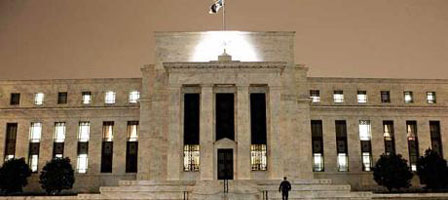Investors generally are even more confused than normal about where to put their money.
The bond markets, with their record high prices for the lowest-risk securities, suggest a long period ahead of poor economic growth. Equity markets, by contrast, have come through a troubled summer in good shape, suggesting that the gloomy forecasts of a double-dip recession ahead are wrong.
 Critics of bonds say it’s nonsense to be satisfied with yields on government securities as low as 3 per cent (Germany) or below 4 per cent (the US) for the next 30 years, as you can be sure the real value of their capital will be devastated by inflation over such a long period.
Critics of bonds say it’s nonsense to be satisfied with yields on government securities as low as 3 per cent (Germany) or below 4 per cent (the US) for the next 30 years, as you can be sure the real value of their capital will be devastated by inflation over such a long period.
Perhaps. But those who say this loudest are nearly always analysts who have been consistently wrong about bonds for a long time. And to suggest that investors are locked into such securities for 30 years is nonsense, as they can be sold at current market values at any time.
Of course there is a risk to bond values from inflation. But for the moment, that is no threat. Prices generally are losing upwards momentum, or even falling. The threat now is not inflation but deflation – the perfect environment for strength in low-risk bonds.
Longer-term, the bond sceptics make the mistake of assuming that, because central banks are printing money like crazy, that means future inflation is inevitable.
That is economic fallacy – at least for periods long enough to be hugely expensive for investors who believe in it. Japan, the world’s second/third largest economy, has been creating money in bubbly proportions for two decades without producing inflation.
Inflation isn’t a product of money creation, but of an excess of demand relative to
supply of goods and services that is accommodated by money creation.
In the world economy as a whole, there is no such excess. In fact there is the opposite problem – insufficient demand. China alone cannot provide enough of it. The other major economies are weighed down by the bad debt of the real estate sector and its poisonous legacy for banks and investment funds.
As stimulus plans expire, and both expert and public opposition to extending them mounts, only the central banks are left to fight against economic slowdown.
Their sole weapon – money creation – is certain to be ineffective. It can keep all the zombie banks alive, but it cannot transmute abundant credit into sufficient demand for goods and services to produce sustained economic recovery.
There is no conflict of logic between buoyant equity markets seemingly predicting inflation and strong bond markets apparently forecasting the opposite. In fact they aren’t doing either. They are reacting to money creation so excessive that their value as instruments of prediction has been destroyed. All liquid assets are rising together on a flood of surplus money.
When you don’t want to borrow, are inclined to be thrifty rather than spendthrift, and the interest banks are offering on your deposits is ridiculous… listed securities or gold look good.
Because of the way the flood of cash is inflating prices in investment markets, we are experiencing a period of relatively poor global economic growth that nevertheless counter-intuitively offers good investment opportunities.
Those of you who have been following my views for a while will know that I am a noflationist. I don’t believe that inflation will be a general threat for a long time because of the imbalances in the world economy.
However, I don’t believe deflation will be a serious problem either – central banks and governments have the means to prevent it, as the Japanese authorities have done. And political pressures will, in time, ensure that those means are applied. source and CopyRight OnTarget Newsletter by Martin Spring
Read Further >> Best investments in a world of explosive money creation





